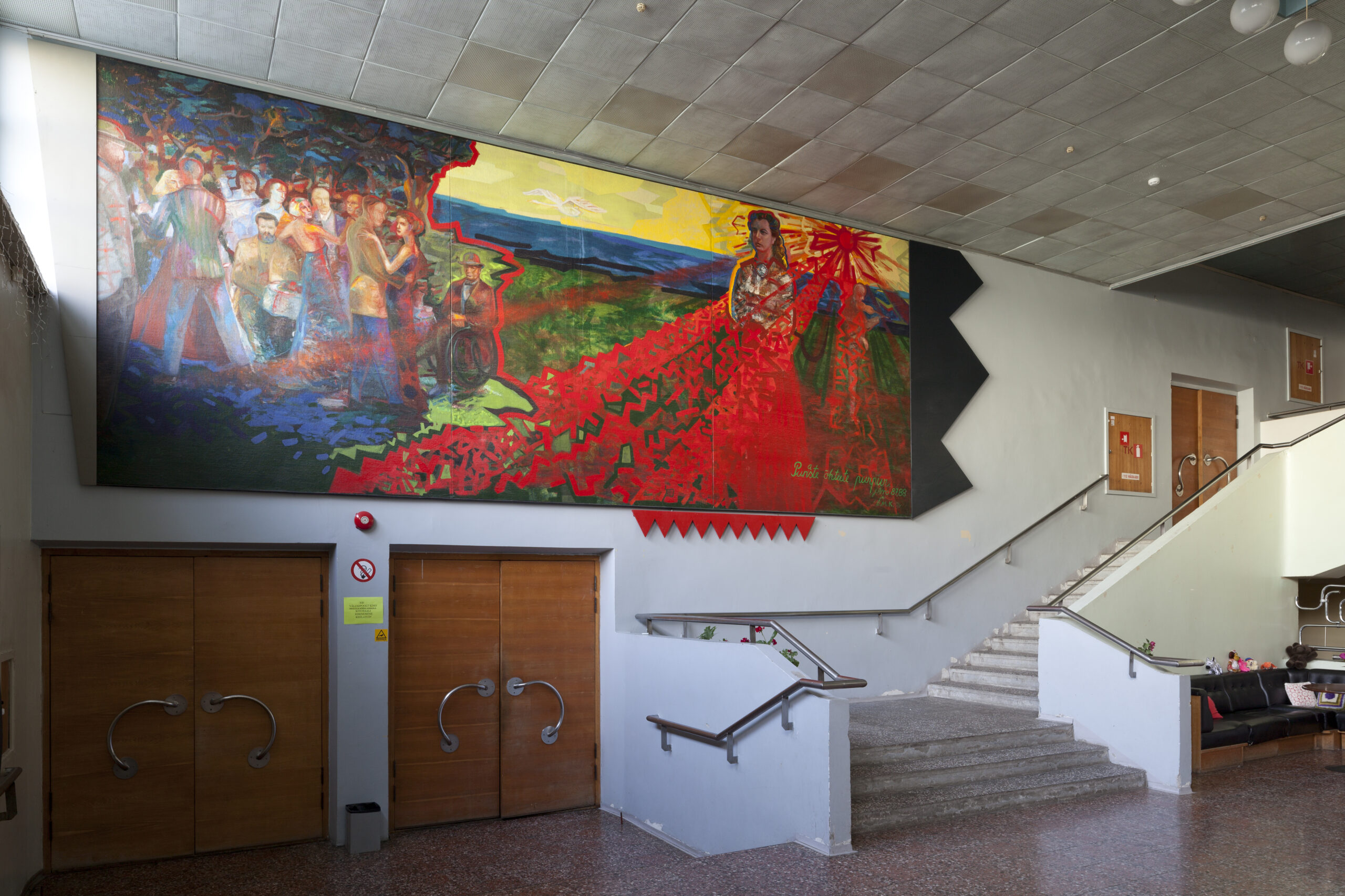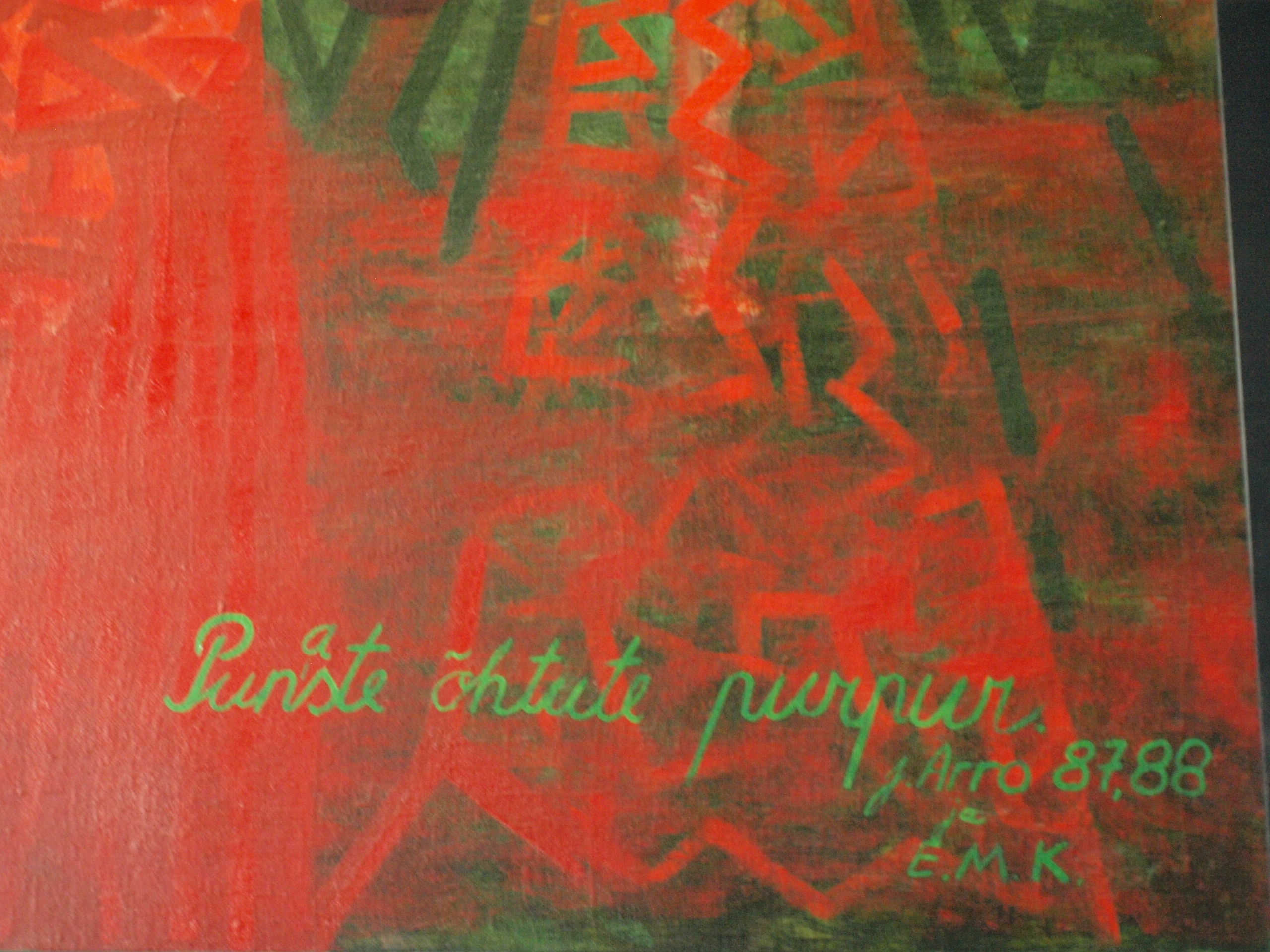Pannel Punaste Õhtute Purpur (“The Purple of Red Evenings”) in Mai Cultural Centre
Year of completion: 1987–1988
Address: Pärnu County, Pärnu, Papiniidu 50 (removed)
Authors Jaak Arro and Epp-Maria Kokamägi
Oil painting
7,5 x 3,5 metres
Not under conservation as a cultural monument
The construction of the Mai housing estate, east of Pärnu city centre, began in the 1970s. The extension of the Suur-Kuke Street, which was the central axis of the area, was renamed 9. mai, and later Mai Street. Similarly to other Soviet Estonian novelty estates, the residents here had to wait for the establishment of other essential functions after moving in. Finally, in 1986 a cultural centre designed by architect Tõnis Palm was opened, providing new opportunities for spending time. A painting was commissioned for the lobby from the newly recognised young artist Jaak Arro who created the piece with his wife Epp-Maria Kokamäe. The painting corresponded with the mentality of the Singing Revolution, being boldly patriotic in content.
Punaste õhtute purpur (“The Purple of Red Evenings”) is the title of Hando Runnel’s patriotic collection of verse published in 1982. It is a notable collection because not only was the author able to outmanoeuvre Soviet censors by writing between the lines, but he also created powerful devices, which the readers gratefully adopted. The poems were read on one’s own and in company, they were the bases for new songs, and became a part of colloquial language. Arro and Kokamäe’s mural translated the inspiring poetic motif into the language of painting.
Although the painting’s dramatic composition may seem somewhat sententious now, at the time of its creation it vividly expressed the eventful daily life where every new day seemed to change the course of history. The “saw teeth” partially framing the canvas – a motif that Jaak Arro also used in his exhibition works – seem unexpectedly ambitious in retrospect as well, but in the 80s such slick visuals originating from the punk movement were very popular. The red sunrays emitting from behind the enigmatic female figure explicitly reference the front cover design of Runnel’s verse collection.
The city of Pärnu has had trouble with developing Mai Centre just as Tallinn has had with the City Hall. Until 2014, it housed a cinema, and in the last few years it has housed the Ranna library. In the beginning of 2021, the grounds were sold to a developer who plans to build business- and residential buildings, as well as ones with a public function. Not long before the completion of our exhibition, the pannel was taken to Pärnu Museum for safekeeping. Although the Museum’s compliance deserves praise, this is a larger issue concerning conservation and public memory, and requires a more extensive discussion. In the last few years a number of buildings have been demolished, and numerous large monumental paintings saved from them have been sent to museum storages for safekeeping, inevitably becoming overwhelming for the memory institutions. After all, monumental artworks in essence belong in the public space.
Gregor Taul








